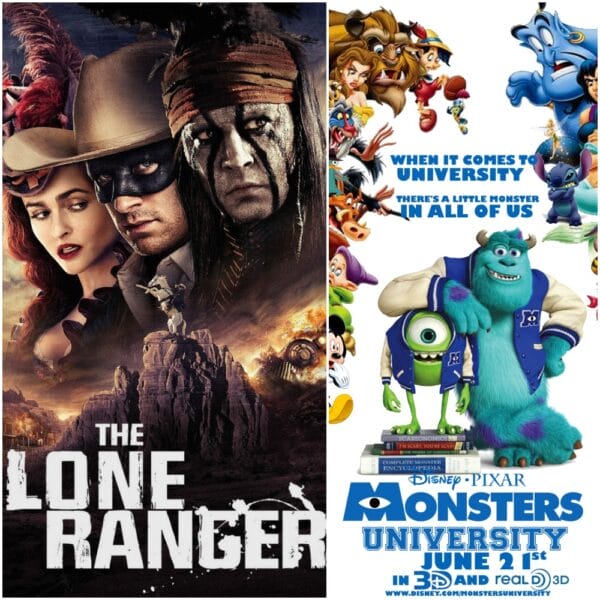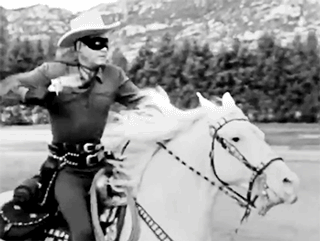
In the escalating arms race between states to lure film production, Utah is hard-pressed to keep up with New Mexico, which had a 25 percent tax credit when “The Lone Ranger’ was shot that has since been raised to 30 percent.īut where Utah didn’t triumph over New Mexico on quantity, Moore said, it did well in terms of quality. (It would have been 25 percent if 85 percent of the crew had been hired locally.) By giving up that tax revenue, the state draws more money into the economy - some $3.7 million spent in Utah by “The Lone Ranger’ production, Moore said. Moore said Utah offered Disney a 20 percent tax credit to bring the production here. The reason “The Lone Ranger’ didn’t shoot more in Utah comes down to money. “Gore believes, and he’s not wrong, that audiences known when you’re faking it,’ he said. “You get home, take a shower, and the bottom of the shower is just brown.’īut it’s worth it to get the places on film, Bruckheimer said. “If it’s not the snow and the wind and rain and the 115-degree heat, it’s the dust,’ Verbinski said. “Working on boats was a lot easier,’ Verbinski said, comparing the experience to shooting the “Pirates of the Caribbean’ films. Shooting a Western on location - with the horses, train engines, period costumes and other details - has its challenges, Verbinski said. He’s picked up his own way of thinking, and he’s dealing with his guilt.’ “Our character of Tonto has been kicked out of his own tribe,’ Verbinski said. Verbinski said the depiction of Tonto aims to acknowledge what American Indians lost during the expansion into the West. There were complaints when Depp was cast as Tonto, though in interviews Depp defended the choice by saying that he has American Indian ancestry and that he and the filmmakers worked to make Tonto a co-equal character to Hammer’s Lone Ranger.īruckheimer noted that the production hired advisers from the Comanche Nation to comment on the script and to be on the set during any scene that featured American Indian characters.
THE LONE RANGER 2013 TV
Others, though, appreciated that any American Indian was shown as a heroic character - particularly when portrayed by Jay Silverheels, a Canadian Mohawk, in the 1950s TV show. Some were rankled that Tonto, an Indian, was deemed a sidekick, subservient to the white hero. Indians historically have had a complicated attitude toward the character since he first appeared on the radio in the 1930s. The sensitivities of American Indians were an issue before filming began because of the role of Tonto. … They could have made a fortune, but they didn’t.’ “Gore has his own creative vision of what he wants, and he found places that excited him,’ Bruckheimer said.īruckheimer praised the Navajo Nation, which owns the Monument Valley area, because “they kept it pristine and didn’t let developers come in. Producer Jerry Bruckheimer, who worked with Verbinski on the first three “Pirates of the Caribbean’ films, called Monument Valley “great.’ “It moved from all those John Ford Westerns, then it migrated to Marlboro commercials, and then it disappeared for a while.’ “It’s sort of the most overly photographed landscape ever,’ Verbinski said of Monument Valley. “I know Gore wanted to be here more days than he was,’ Moore said.

The production shot about 25 days in Utah, primarily in Monument Valley and around Moab. The production also filmed in Utah, Arizona, Colorado and California. The movie, with a budget reported to exceed $200 million, shot 80 percent of its principal photography in New Mexico, according to Marshall Moore, director of the Utah Film Commission.

Reid is found by a passing Indian, Tonto (played in the film by Johnny Depp), who creates Reid’s signature mask and rides with him to seek justice against Cavendish and his cohorts. “The Lone Ranger’ (which opens nationwide on WednesdayJuly 3) tells of a young lawman, John Reid (played in the new film by Armie Hammer), who is the sole survivor when a group of Texas Rangers - including John’s brother Dan (James Badge Dale) - is ambushed by the notorious outlaw Butch Cavendish (William Fichtner). The land where John Ford shot “Stagecoach’ and countless other redrock Westerns returns to the big screen next week, featured prominently in “The Lone Ranger,’ Disney’s big-budget reboot of the classic Western story that has been told since 1933 in radio, television and movies. “You couldn’t pan a camera and not go, ‘ That’s from this movie,” ‘ Verbinski said of shooting in the landmark location that straddles Utah’s southern border with Arizona.

If you love Westerns, as filmmaker Gore Verbinski does, then the landscapes of Monument Valley are as familiar as Clint Eastwood’s squint and John Wayne’s walk.

Utah’s iconic Monument Valley sets stage in ‘The Lone Ranger’ – The Denver Post Close Menu


 0 kommentar(er)
0 kommentar(er)
